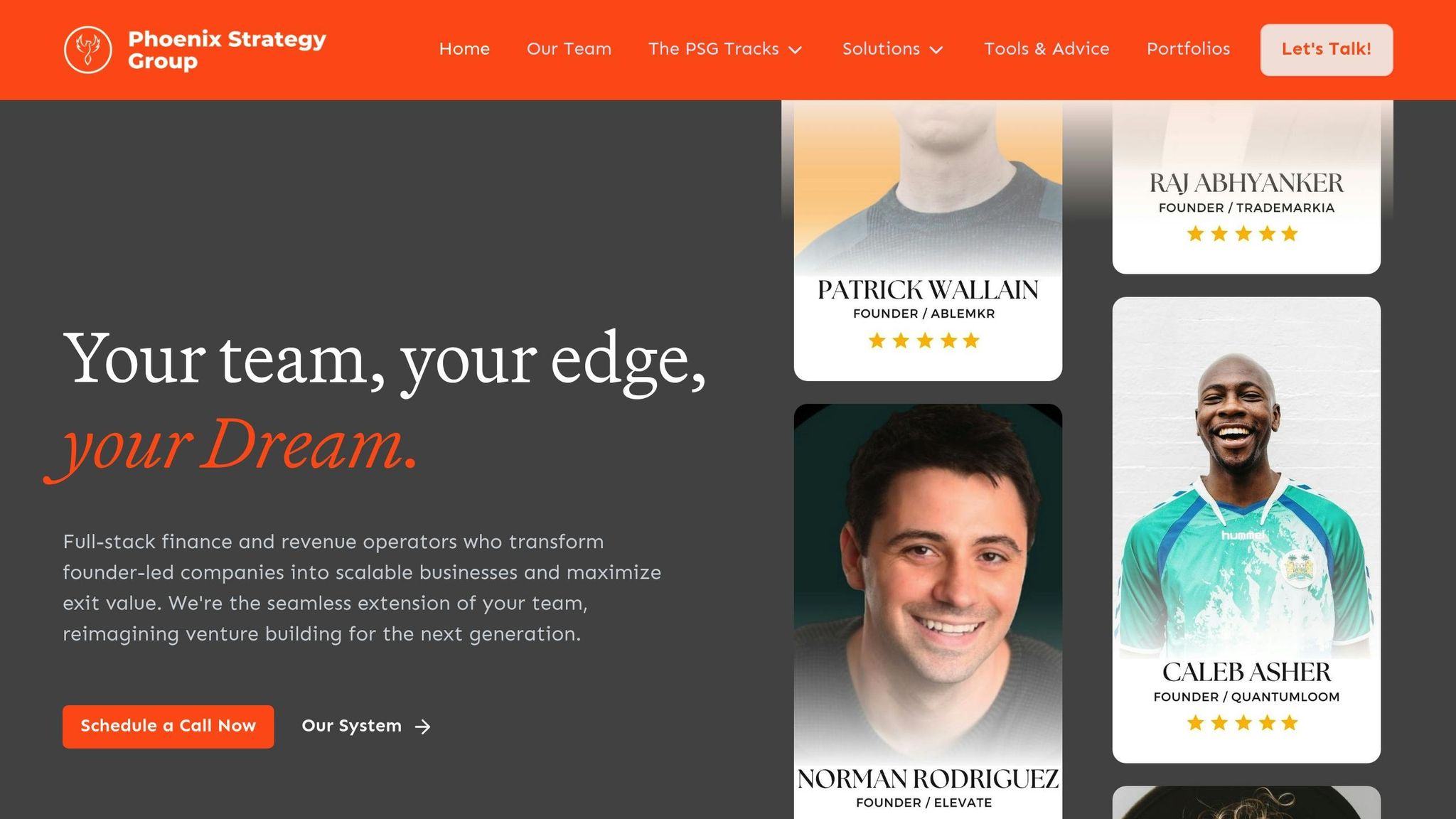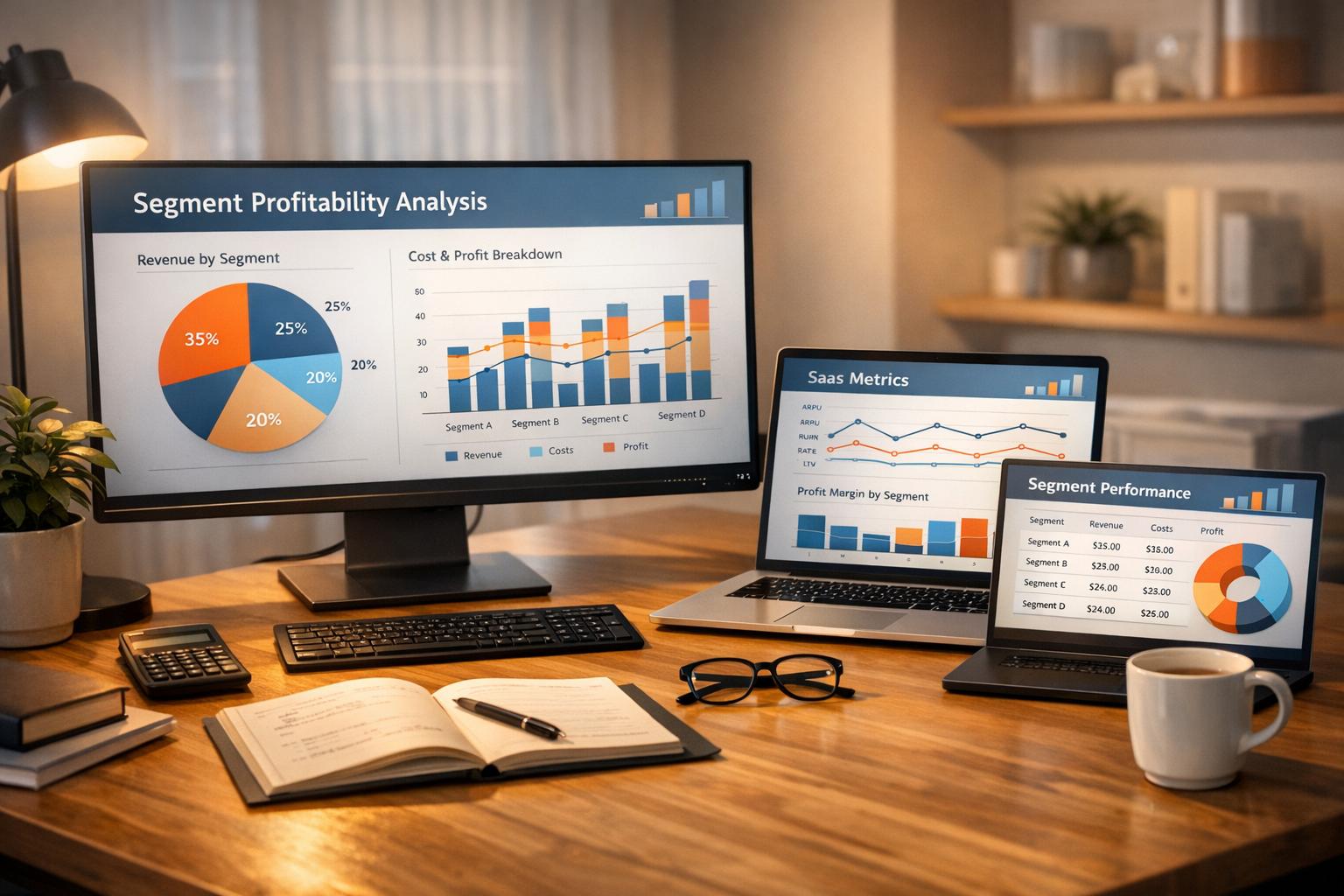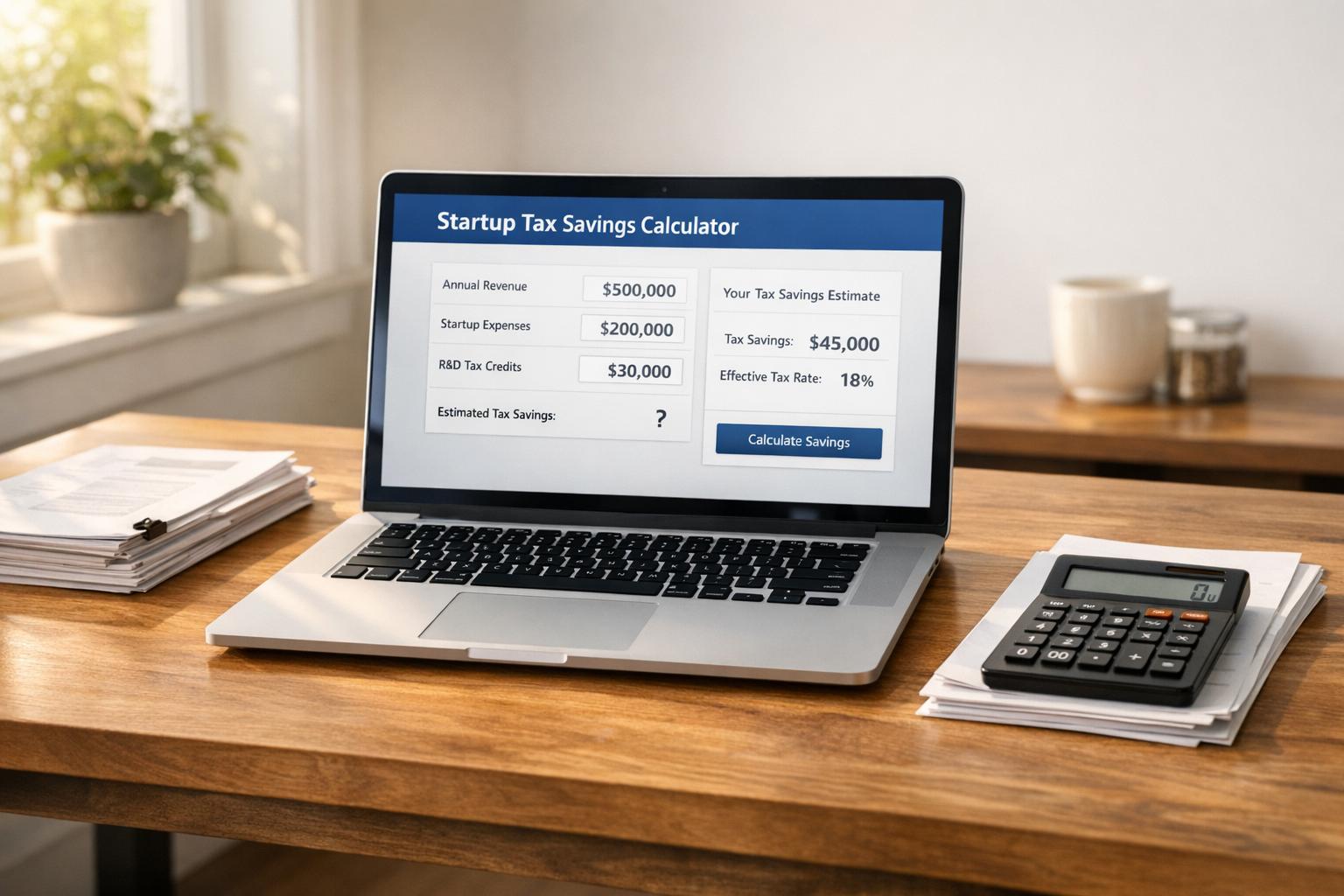Risk-Return Tradeoff in Venture Capital

Venture capital investing is all about balancing high risks with the potential for massive returns. Here's the core idea: most startups fail, but a small percentage generate outsized gains that make up for the losses. This dynamic creates a unique challenge for both investors and founders.
Key Points:
- High Failure Rates: 75–90% of venture-backed startups don't generate returns.
- Power Law Dynamics: Just 1–2% of startups drive most industry gains.
- Risk Types: Market, technology, team, and exit risks are common.
- Return Drivers: Large markets, product differentiation, founder expertise, and scalability boost potential returns.
- Stages Matter: Early-stage investments have higher risks but greater upside, while late-stage deals are safer with moderate returns.
Investors manage this risk-return tradeoff through diversification, staged investing, and data-driven decisions. Founders, on the other hand, need to present clear growth strategies, mitigate risks, and showcase strong financial planning to attract funding.
How to De-Risk Venture Capital: Why Diversification is the CIO’s Secret Weapon
Factors That Drive Risk and Return in Venture Capital
When it comes to venture capital, understanding the forces behind risk and return is crucial for both founders and investors. These factors play out differently depending on the investment stage and industry, creating a complex web of challenges and opportunities. Let’s break down the key elements that shape this landscape.
Main Sources of Risk in Venture Capital
Venture capital comes with its fair share of risks, which can be grouped into four main categories:
- Market risk: This involves uncertainty about customer demand and competitive pressures. A startup could develop a fantastic product, but if the market isn’t ready or competitors flood the space, even flawless execution might not be enough to succeed.
- Technology risk: In fast-moving industries, today’s cutting-edge innovation can quickly become outdated. Startups working with unproven technology face the risk that their solutions might fail - or be overtaken by something better - before they can gain traction.
- Team risk: The success of a startup often hinges on the founding team’s ability to execute their vision. Inexperienced founders may face challenges scaling operations, managing finances, or making pivotal decisions. Even the best ideas can falter without strong leadership.
- Exit risk: This relates to the uncertainty around liquidity events, such as IPOs or acquisitions. A company might perform well operationally but still struggle to deliver returns if market conditions make exits difficult or if the business model doesn’t attract buyers.
In general, early-stage investments face higher risks related to technology, team, and market factors. Growth-stage deals, while less exposed to market risk, often encounter greater exit risk due to external conditions like economic downturns or industry-specific challenges [7].
Key Drivers of Return in Venture Capital
On the flip side, certain factors can drive exceptional returns in venture capital investments:
- Market size: A large addressable market is often the foundation for outsized returns. Even capturing a modest share of a massive market can translate into billions in revenue.
- Product differentiation: Startups with unique value propositions can build strong competitive advantages, attract loyal customers, and maintain healthy profit margins. Differentiation makes it harder for competitors to encroach on their space.
- Founder expertise: Experienced founders bring the skills needed to navigate challenges, make strategic decisions, and attract the capital required to scale effectively. Their leadership often sets the tone for a company’s success.
- Scalability: A business model’s ability to grow without proportional cost increases is a major factor. Software companies are a prime example - once a digital product is built, it can serve millions of users with minimal additional investment.
Take Uber and Airbnb, for instance. Both leveraged massive markets and scalable platforms to achieve rapid growth, while Stripe’s success was fueled by strong founder leadership [7]. These examples highlight how the right factors can drive extraordinary outcomes.
Sector Analysis: Risk and Return Profiles by Industry
Different industries come with their own unique risk-return profiles, shaping how investors approach portfolio construction. Here's a closer look:
| Sector | Typical Risk Level | Potential Return | Key Risk Factors | Example Companies |
|---|---|---|---|---|
| Technology | High | Very High | Market, tech, team | Uber, Stripe |
| Healthcare | High | High | Regulatory, tech, exit | Moderna, 23andMe |
| Consumer Goods | Moderate | Moderate | Market, competition | Allbirds, Peloton |
| Fintech | High | High | Regulatory, market | Robinhood, Plaid |
| SaaS | Moderate-High | High | Market, scalability | Zoom, Slack |
This table underscores the importance of diversification. Sectors like technology and healthcare offer high potential returns but come with significant risks, such as regulatory hurdles or rapid innovation cycles. Meanwhile, consumer goods provide more stability but with moderate upside. Fintech investments often promise high returns but face regulatory complexities, and SaaS companies balance scalability advantages with intense competition.
External factors like economic downturns, inflation, or interest rate changes can further complicate the picture. For instance, recessions might limit exit opportunities, while rising interest rates can impact valuations and capital availability. Regulatory changes, especially in heavily regulated industries like fintech and healthcare, can either open new doors or introduce new challenges [2].
How to Measure Risk-Adjusted Returns in Venture Capital
Evaluating performance in venture capital is far from straightforward. Unlike stocks, VC investments are illiquid and often take years to yield results. This means assessing performance requires specialized tools that account for both the timing of cash flows and the inherent risks.
Key Metrics for Risk-Adjusted Returns
Internal Rate of Return (IRR)
IRR calculates the annualized return by identifying the discount rate at which the net present value of cash flows equals zero. It reflects both capital calls and distributions to limited partners [2].
However, IRR has its challenges in the VC world. It's especially sensitive to the timing of cash flows. For instance, a single large early exit can inflate IRR, even if the rest of the portfolio underperforms [2].
Multiple on Invested Capital (MOIC)
MOIC shows the total return relative to the capital invested. For example, a 3x MOIC means $3 is returned for every $1 invested. While it doesn’t consider the timing of returns like IRR, it provides a straightforward view of absolute performance.
Sharpe Ratio
The Sharpe ratio evaluates excess returns per unit of risk. A higher ratio indicates better risk-adjusted performance. But in venture capital, calculating standard deviation is tricky due to infrequent valuations and the irregular nature of returns [2].
Alpha and Beta
Alpha measures returns above benchmark expectations, while Beta gauges sensitivity to market movements. A Beta above 1.0 signals higher market volatility, whereas a Beta below 1.0 indicates less volatility [2].
Upside and Downside Volatility
In venture capital, understanding both potential gains and losses is crucial. With only 1-2% of venture-backed companies driving most of the industry's returns, analyzing upside and downside volatility helps investors assess the likelihood and scale of significant wins versus losses [2][6].
These metrics must always be interpreted with VC's long-term nature and illiquidity in mind.
How to Interpret Metrics for Long-Term Investments
Venture capital investments often span over a decade, making factors like duration and liquidity risks unavoidable [5]. Early-stage investments have high failure rates - about 65% - while late-stage investments see failure rates drop below 5% [4][6].
When analyzing IRR, consider the fund’s age and stage. Early exits can inflate performance metrics, while a fund with a high proportion of unrealized value might still be too young for accurate evaluation. For context, growth-stage investments typically aim for IRRs of around 25% with MOICs of 5-10x, whereas late-stage investments target IRRs closer to 20% with MOICs of 1.5-5x over roughly six years [6].
The Sharpe ratio, though valuable, becomes less reliable in venture capital due to the extended timelines and infrequent valuations. Instead of relying on a single number, comparing metrics across similar funds, vintage years, and sectors offers more meaningful insights [2].
Context plays a huge role in interpreting performance. A fund launched during the 2008 financial crisis will naturally differ in risk-return characteristics from one started in a bull market. Sector focus matters too - healthcare and fintech funds, for example, face regulatory challenges that software-focused funds may avoid.
This broader analysis helps inform strategic decisions and portfolio adjustments in venture capital.
Using Tables to Compare Performance Data
Tables are a powerful way to summarize and compare performance data. They allow quick comparisons of risk-adjusted returns, highlighting differences across funds, stages, or sectors. For example:
| Fund Stage | Vintage Year | IRR (%) | MOIC | Sharpe Ratio | Alpha | Failure Rate |
|---|---|---|---|---|---|---|
| Early-stage | 2018 | 22.3 | 4.2 | 0.8 | 3.1 | ~65% |
| Growth-stage | 2018 | 18.7 | 3.1 | 1.2 | 2.4 | ~30% |
| Late-stage | 2018 | 15.4 | 2.8 | 1.4 | 1.8 | <5% |
Notice how the Sharpe ratio improves in later stages, reflecting reduced volatility even though absolute returns may decline. Similarly, Alpha tends to be higher in early-stage funds, where skilled managers have more opportunities to outperform benchmarks.
When comparing sectors, it’s important to account for specific factors like regulatory hurdles, development timelines, and capital intensity. For instance, healthcare funds often face stricter regulations compared to software-focused funds.
Benchmarking is also critical. Comparing fund performance against peer group medians, public market equivalents, or indices like the Cambridge Associates U.S. Venture Capital Index helps distinguish between manager expertise and favorable market conditions.
For founders, these metrics can be invaluable when presenting to investors. They demonstrate a deep understanding of risk-adjusted returns and help position a company effectively within the broader investment landscape. Firms like Phoenix Strategy Group can assist growth-stage companies in interpreting these metrics, leveraging advanced analytics and proprietary data to enhance fundraising and strategic planning efforts.
sbb-itb-e766981
How to Optimize the Risk-Return Tradeoff
Balancing ambitious growth goals with careful risk management is the key to optimizing the risk-return tradeoff. For growth-stage companies, this means using strategies that reduce risks while aiming for strong returns.
Portfolio Diversification Methods
Diversification is the cornerstone of risk management in venture capital. By spreading investments across various sectors, stages, and regions, investors can cushion the impact of setbacks from individual companies on the overall portfolio.
One effective tactic is sector diversification. For instance, a venture capital firm that invested in SaaS, biotech, and fintech startups was able to weather a market downturn. While one sector underperformed, gains in the other two offset the losses. This approach is particularly relevant in venture capital, where failure rates can be high.
Stage diversification adds another layer of protection. Later-stage investments tend to have much lower failure rates - ranging from 1–5% - compared to early-stage ventures [6]. By spreading investments across seed, Series A, and later stages, investors can balance the high risks and rewards of early-stage ventures with the steadier returns of mature companies.
Geographic diversification also helps reduce risks tied to specific markets, such as regulatory changes or competitive pressures, by investing in different regions and economic environments.
Active Portfolio Management Techniques
Diversification is just one piece of the puzzle. Active portfolio management plays a critical role in fine-tuning the risk-return balance.
One key approach is staged investing, where capital is released in phases based on a company's progress. This strategy limits losses if a company fails to meet expectations while reserving funds for top-performing ventures. A fund that adopted staged investing saw stronger returns by releasing follow-on funding only after key milestones were achieved [7].
Rebalancing is another essential practice. Regularly adjusting portfolio allocations helps maintain the desired risk levels and prevents overexposure to a single investment. For portfolios targeting 5–10x returns with IRRs around 25%, rebalancing ensures no single company dominates the portfolio [6].
Follow-on funding strategies allow investors to gradually increase their stakes in high-performing companies rather than committing too much capital upfront. This aligns with the reality that a small number of investments typically drive the majority of returns [5].
Additionally, secondary trades and structured tenders provide partial liquidity options for late-stage investments. These tools let investors realize some returns while still keeping potential upside [6].
Using Data to Make Better Investment Decisions
Data-driven strategies are a powerful complement to diversification and active management. Financial modeling and scenario planning allow investors and founders to evaluate potential outcomes - best-case, base-case, and worst-case scenarios - so they can make smarter decisions about where to allocate capital [2].
Growth-stage companies benefit from integrated data systems that track financial, sales, and marketing metrics. Clean, organized data enables real-time monitoring of key performance indicators, helping companies spot risks early and adjust their strategies.
Real-time analytics and automated reporting provide investors with up-to-date insights into portfolio performance, market trends, and emerging risks. These tools make it easier to identify underperforming investments or new opportunities quickly.
Phoenix Strategy Group exemplifies this approach by using advanced technology and proprietary data systems to help growth-stage companies refine their risk-return strategies. Their integrated financial models and real-time data tools empower teams to make informed decisions about growth and risk management.
"When you put the right data in front of an empowered team, they get better." - Phoenix Strategy Group [8]
Tracking key metrics like the Sharpe ratio, alpha, and IRR ensures that portfolios deliver returns that justify the risks taken [9]. Combining these metrics with milestone-based funding decisions creates a systematic framework for optimization.
Successful companies often track performance weekly and plan monthly to refine forecasts and targets. This continuous improvement process ensures data remains at the heart of decision-making and risk management.
For founders looking to attract sophisticated investors, demonstrating mastery of these techniques signals a deep understanding of venture capital dynamics. Companies that can clearly present their risk-return data and showcase systematic risk management are better positioned to secure funding and achieve successful exits.
What Founders Need to Know About Risk-Return Tradeoff
For founders, understanding the risk-return tradeoff isn't just an abstract concept - it's a critical framework that can determine your ability to secure funding and build a thriving business. With the high failure rate of venture-backed startups, demonstrating a solid handle on both risks and potential rewards is essential. This framework ties directly into the venture capital world, where growth, risk management, and investor communication intersect.
How to Balance Growth Goals and Risk Tolerance
Setting realistic growth targets starts with a thorough, data-driven self-assessment. Your risk tolerance hinges on several factors, including your company’s stage, the volatility of your industry, and how much capital you have on hand.
Start by comparing your goals to industry benchmarks. For instance, a SaaS founder might aim for 30% annual growth based on market data but should adjust that target depending on their ability to manage cash flow and operational risks[1][2].
Diversifying revenue streams is another key step. Relying on a single customer base or product line can leave your business exposed. For example, a health tech startup serving both hospitals and clinics reduces its dependence on any one market[2][3].
Expand cautiously by testing in one region before scaling. Use measurable results to guide your next steps. Regular scenario planning - mapping out best-case, base-case, and worst-case financial outcomes - can help ensure your growth targets remain realistic under various market conditions[2][3].
By setting clear goals and diversifying revenue streams, you’ll be better equipped to present a strong risk-return profile to potential investors.
How to Present Risk-Return Profiles to Investors
Once you’ve assessed your risks internally, the next step is presenting a compelling risk-return profile to investors. Investors want a clear picture of both the potential upsides and the risks involved. This requires transparency, solid data, and a demonstrated ability to manage challenges effectively.
Use financial projections that account for multiple scenarios. Show expected returns under optimistic, realistic, and pessimistic conditions. Highlight metrics like projected IRR, cash burn rate, runway, and risk-adjusted measures such as the Sharpe ratio (a value above 1.0 typically indicates a favorable balance of risk and return)[2].
A risk matrix can also be a powerful tool. Identify major risks and explain how you plan to address them. This approach reassures investors that you’ve thought through potential obstacles.
| Risk Factor | Impact Level | Mitigation Strategy |
|---|---|---|
| Customer Concentration | High | Expand to new segments |
| Regulatory Changes | Medium | Engage legal advisors |
| Technology Failure | High | Invest in QA and testing |
Back up your projections with historical data and market research. Trends in customer acquisition costs, churn rates, and comparisons to industry benchmarks can make your risk assessments more credible.
Be upfront about uncertainties. Investors value founders who acknowledge what they don’t know and outline plans to gather more data and adapt strategies as needed.
Risk Management Strategies for Founders
Effective risk management goes beyond identifying potential problems - it’s about putting systems in place to protect your business while enabling growth. These strategies align with broader principles like diversification and portfolio management, but they’re tailored to the unique challenges startups face.
Tie funding to milestones. Milestone-based funding ensures you receive investment in stages, tied to specific achievements. For example, you might secure $500,000 to develop an MVP, with an additional $1 million contingent on reaching 1,000 paying users[2].
Form strategic partnerships early. These partnerships can validate your market position, lower customer acquisition costs, and open up alternative revenue streams. They also show investors that others see value in your business.
Keep your cost structure flexible. Design operations so expenses can scale up or down based on revenue performance. Using contractors or negotiating variable vendor pricing are practical ways to manage financial risk.
Adopt strong financial management systems. Real-time financial data helps you track key performance indicators, spot risks early, and make proactive adjustments before small issues become major problems.
One example of effective risk management comes from Phoenix Strategy Group. When Norman Rodriguez, Founder/CEO of ElevateHire, faced financial challenges, the group helped reorganize the company’s finances and renegotiate lending agreements, guiding it through a tough period[8].
"PSG saved my dream. They helped us get our financials in order and renegotiate our lending agreements, pulling us through a tough financial crunch."
– Norman Rodriguez, Founder/CEO, ElevateHire[8]
Plan for exits from the start. By preparing due diligence materials, maintaining clean financial records, and tracking growth metrics early, you’ll be ready to maximize returns when the right opportunity arises. This preparation also signals to investors that you’re focused on delivering returns for them.
The best founders treat risk management as an ongoing process. Continuously updating risk assessments, refining strategies, and keeping investors informed builds trust and lays the groundwork for steady growth in the high-stakes world of venture capital.
Conclusion
Every venture capital decision hinges on balancing risk and return. Navigating this tradeoff effectively is what separates successful funding stories from missed opportunities and thriving portfolios from financial losses.
Key Takeaways for Entrepreneurs and Investors
In venture capital, higher returns come with higher risks. This dynamic is especially clear in VC, where just 1-2% of companies often deliver the returns that make entire portfolios profitable[5][6].
Diversification and data-driven choices are what set apart those who succeed. For investors, this means spreading investments across various sectors, stages, and regions. For founders, it’s about diversifying revenue streams, targeting multiple customer segments, and building flexible business models. Tools like the Sharpe ratio, alpha, and beta help investors evaluate risk-adjusted returns, while founders who back their projections with solid data and outline clear risk scenarios gain credibility[2].
The uneven nature of returns in venture capital requires patience and strategic foresight. As discussed earlier, understanding risk metrics and embracing diversification are critical for long-term success. Both founders and investors need to align their expectations with these realities, preparing for holding periods that often stretch beyond six years.
Transparent communication about risks and rewards is essential for building trust and attracting the right partners. Founders who openly discuss business risks, present realistic scenarios, and demonstrate strong risk management practices are better positioned to secure aligned and supportive investors.
These principles underscore the need for targeted professional guidance.
How Phoenix Strategy Group Supports Risk-Return Optimization

Given the complexities of venture capital, having strategic advisors can make all the difference. Phoenix Strategy Group specializes in helping growth-stage companies optimize risk-return dynamics. With a proven track record of supporting over 240 portfolio companies, facilitating more than $200 million in funding in the past year, and executing 100+ M&A transactions, they bring deep expertise to the table[8].
Their approach focuses on the core aspects of risk-return management. Through fractional CFO services, they assist founders in implementing milestone-based funding strategies and scenario planning that resonate with investors. Their FP&A systems provide real-time financial insights and risk metrics, empowering companies to make proactive decisions.
For businesses in financial distress, their interventions can be game-changing. Take ElevateHire, for example. When the company faced a financial crisis, Phoenix Strategy Group stepped in to restructure finances and renegotiate lending agreements.
"PSG saved my dream. They helped us get our financials in order and renegotiate our lending agreements, pulling us through a tough financial crunch."
– Norman Rodriguez, Founder/CEO, ElevateHire[8]
Their M&A advisory services are another key strength, helping companies maximize valuations during exits. From due diligence preparation to deal structuring and execution, their expertise ensures that returns justify the inherent risks of venture capital.
"As our fractional CFO, they accomplished more in six months than our last two full-time CFOs combined."
– David Darmstandler, DataPath[8]
Whether you’re a founder aiming to present a compelling risk-return case to investors or an investor seeking to support portfolio companies in managing financial risks, the right mix of strategy and execution is crucial. While venture capital will always involve substantial risks, leveraging data, strategic planning, and professional expertise can tip the scales toward success, creating lasting value for all stakeholders.
FAQs
How can venture capital investors mitigate the risks associated with high startup failure rates?
Venture capital investors can navigate the risks tied to startup failures by spreading their investments across a variety of companies. Backing businesses in different industries and at various stages helps cushion the blow if one venture doesn’t pan out.
Another key approach is conducting detailed due diligence. This means digging into the founding team’s credentials, assessing the market’s potential, understanding the competitive landscape, and scrutinizing financial forecasts. These steps help pinpoint startups with stronger odds of thriving.
Lastly, taking an active role can make a big impact. By providing strategic advice, introducing key connections, and offering operational support, investors can equip startups to tackle obstacles and improve their chances of success.
How can founders present a strong risk-return profile to secure venture capital funding?
To secure venture capital funding, founders need to highlight a clear plan for growth and profitability while addressing any potential risks. This means developing a business model that can scale effectively, presenting a realistic exit strategy, and ensuring strong financial and operational systems are in place to reassure investors.
By showing a solid grasp of market opportunities and tackling risks with thorough research and preparation, founders can present a well-rounded and convincing case for investment. Effective financial management and strategic foresight are essential to making your business stand out to venture capitalists.
How do metrics like the Sharpe ratio and IRR help assess risk-adjusted returns in venture capital investments?
Metrics like the Sharpe ratio and Internal Rate of Return (IRR) play a key role in assessing the relationship between risk and reward in venture capital. The Sharpe ratio evaluates how much excess return is earned for each unit of risk taken, offering a way to judge whether the added risk of an investment is delivering worthwhile returns. On the other hand, IRR calculates the annualized return of an investment, taking into account cash flows and the time value of money.
These tools help venture capitalists make smarter investment choices by aligning potential opportunities with their financial objectives and risk appetite. For founders, having a grasp of these metrics sheds light on how investors assess deals and decide where to allocate their funds.




